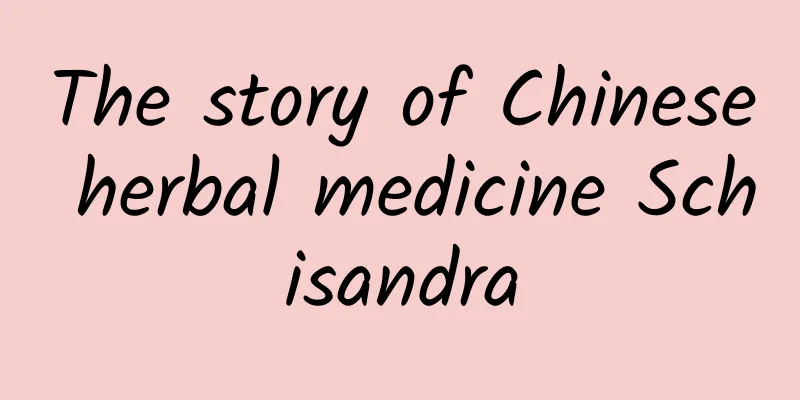The efficacy and function of small sedge grass

|
Diseases require improvement through medicine. Different diseases require different medicine choices. If you want to treat your own diseases well, you need to use the right medicine. The traditional Chinese medicine Xiaogujingcao is also very helpful in treating certain diseases. Let’s take a look at this medicinal herb. 【English name】flower of Small pipewort [Other names] Daixing grass, Wenxing grass, meteor grass, Yixing grass, pearl grass, fish eye grass, Tianxing grass, Buddha's crown beads, ear irrigation grass, yinzi grass, starry sky, sheep shell beads, golden hoop stick, drum hammer grass, Guxing grass, Gujingzi, ear brush, ear digging grass, clothes button grass, bald head grass [Source] Medicinal material source: It is the flower head with flower stalks of plants such as Coix lacryma-jobi, Coix lacryma-jobi indica, Coix lacryma-jobi indica and Coix lacryma-jobi indica of the Coix lacryma-jobi family. 【Original morphology】 1. There are many fibrous roots, which are soft and dense. Stemless. The leaves are basal, linear-lanceolate, 6-20cm long, 3-4mm wide in the middle, up to 8mm wide at the base, slightly obtuse at the tip, with more than 10 longitudinal veins, and small transparent squares formed by longitudinal and transverse veins on the leaves. There are many peduncles of varying lengths, up to 30 cm tall, shorter or taller than leaves; the capitula is nearly spherical, 4-6 cm in diameter, with involucral bracts obovate, 2-2.5 mm long, and yellow stems; the bracts are obovate, with a sharp tip, about 2 mm long, and densely covered with short hairs on the upper part. There are fewer male flowers, with the outer perianth segments fused to form an obovate bract, 3-lobed at the apex, blunt and with short hairs, while the inner perianth segments fused to form an inverted conical tube; 6 stamens, black anthers, 0.2mm long; most female flowers, surrounded by the reproductive inflorescence, with almost no pedicels; the outer perianth segments fused to form an elliptical bract, the inner perianth segments 3, free, spoon-shaped, with a black gland at the apex and with long and thin hairs; 1 pistil, 3-chambered ovary, 3-lobed stigma. The capsule is triangular spherical, about 1mm long. The seeds are oblong and hairy. Flowering and fruiting period is from July to December. 2. The difference between the Baiyao Gujingcao species and the Gujingcao is that the leaves grow in clusters and the leaves are narrow and linear. The inflorescence is loose and without white powder; the sepals of male flowers are usually fused, the back of the lobes are not keeled, and the anthers are white; the sepals of female flowers are 2-3, free, narrowly linear, and the petals are absent. 3. The difference between this species and the previous two species is that the inflorescence is solid and covered with white powder; the sepals of the male flowers are similar in shape to those of the female flowers, both with 3 pieces, 2 of which are larger and boat-shaped, with wing-like keels on the back. The leaves are 6.5-15cm long, glabrous on the back; the peduncle is slightly longer than the leaves. 4. The difference between the herbaceous species of P. pubescens and the first three is that the leaves are up to 60 cm long and covered with long flowing soft hairs on the back; the peduncle is usually as long as the leaves, rarely twice as long as the leaves. The head inflorescence is solid, covered with white powder, and its shape does not change when dry; the outer bracts are shorter than the inflorescence; the male petals are densely covered with long hairs at the tip and have black glandular dots; the female petals are narrowly linear, thicker, densely covered with long hairs at the tip and have black glandular dots underneath. [Habitat distribution] Ecological environment: 1. 2. Baiyao Gastrodia elata grows in paddy fields and ditches. 3. South China Coptis chinensis grows in paddy fields or stream wetlands. 4. The hairy grass grows in paddy fields or stream wetlands. [Cultivation] Cultivation key points: Biological characteristics: It likes warm and humid climate, and avoids drought and severe cold. It is advisable to choose paddy fields or low wetlands for cultivation. [Properties] Identification of medicinal materials: This product is a head inflorescence with a flower stalk, mostly tied into small bunches. The whole body is light brown. The flower stem is slender, 14-24cm long and less than 1mm in diameter. The surface is light yellow-green with 4-5 twisted edges. It is soft and not easy to break. 【Nature and flavor】 Spicy; sweet; neutral 【Meridian】 Stomach; Lung 【Functions and indications】 Dispel wind and dissipate heat; improve eyesight and remove cataracts. It is mainly used for red cataracts, photophobia and tearing, pterygium, headache, sinusitis, throat congestion, toothache and itching caused by urticaria. [Usage and Dosage] For oral use: decoct in water 9-12g; or make into pills or powder. For external use: take appropriate amount, decoct in water for external washing; or burn to preserve its properties, grind into powder and sprinkle externally; or grind into powder and blow into the nose, or burn to fumigate the nose. 【Note】 Take with caution if you have blood deficiency or eye disease; avoid using iron utensils to decoct the medicine. [Discussions by various scholars] "Xinhua Compendium of Materia Medica": Inflorescence or whole plant: spicy, sweet, slightly warm in nature. It has the functions of improving eyesight, removing cataracts and relieving pain. Used for conjunctivitis, sore throat, toothache, cold and fever, and headache. 【Excerpt】 Chinese Materia Medica The above introduces some common knowledge about Scutellaria baicalensis. In order to make more people understand Scutellaria baicalensis, you can accumulate more related things in your daily life, which will play an important role in maintaining our health. |
<<: The efficacy and function of small fruit soap
>>: The efficacy and role of Xiao Guanzhong [picture]
Recommend
"Crackling" is the sound of the New Year, but can we set off fireworks during the Spring Festival?
...
More and more people are diagnosed with thyroid problems. Is it caused by staying up late and being under a lot of stress?
Many people have similar doubts: going to the hos...
The pros and cons of Chinese medicine bathing
Traditional Chinese medicine is a great treasure ...
The efficacy and function of Gangmei
Since Chinese medicine has fewer side effects, mo...
The efficacy and function of Artemisia striata
In fact, the occurrence of many human diseases is...
The efficacy and function of a penny
Yipianqian is a kind of Chinese herbal medicine. ...
The efficacy and function of the root of Digui grass
Do you know about the root of Digui grass? It is ...
What Chinese medicine can I take to replenish sperm?
It is actually feasible to use traditional Chines...
Back to school season | Do you experience cervical pain and scoliosis after studying for a long time? Correct posture can help you stay away from the invisible "neck" enemy!
With the start of the new school year, students a...
The efficacy and function of Niu Mao Qi
The nutritional value of Gastrodia elata is rich ...
The efficacy and function of mountain ash
Rowan can not only supplement the body's nutr...
What are the Chinese herbal medicines for treating impotence?
The use of drugs for the treatment of impotence s...
The efficacy and function of red euphorbia
Traditional Chinese medicine is very helpful in t...
One ton of lunar soil can provide 50 people with drinking water for a day? Chinese scientists propose a "lunar soil water production method"!
One ton of lunar soil may provide drinking water ...









